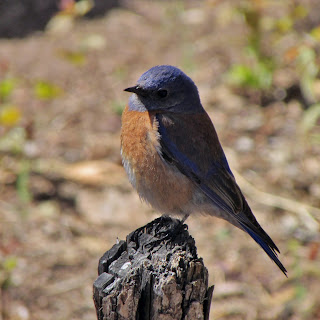Bright Angel Trail has some very cool history that precedes the formation of the national park. The upper half of the trail was originally created by the Havasupai as a route to access Indian Garden, which was used as a water source. They used the trail until 1903 when they were evicted from the canyon by President Theodore Roosevelt. The trail went on to be acquired by Ralph Cameron, who named it the Bright Angel Trail and charged a toll for hikers wanting to go down into the canyon. Despite the formation of Grand Canyon National Park in 1919, the trail remained privately owned and operated until 1928 when it was acquired by the NPS after a legal dispute. The trail remains one of the most popular places to hike, with many visitors making a day hike down to mile and a half rest house. The trail is also very popular with backpackers to ascend the canyon due to the availability of water at Indian Garden, 3 mile rest house, and mile and a half rest house (water is shut off during colder months at the rest houses to avoid pipe freezing). However, the trail is very steep, maintaining an average of 10% grade from the river to the trailhead and being described as "extremely strenuous" by NPS.
We got up to the canyon just before sunset on Thursday evening and everyone got their first glimpse of the canyon from Mather Point. After dinner at Mather Campground we returned to the rim to watch the stars at Yavapai Point. One of the big expressions at the Grand Canyon is "half the park is after dark" and despite the full moon we were able to see a ton of stars and a few satellites.We started at the trailhead early the next morning, beginning our hike around 7:30. At 6800 ft. the morning temperature was in the low 60s and we were able to get all the way to Indian Garden in the shade. Surrounded by Cottonwood Trees, thick green vegetation, and a small creek, it's easy to forget you are in the middle of the Grand Canyon.
After a short break at Indian Garden, 4.5 miles and 3000 ft. below the rim, we began on the Plateau Point Trail. The trail runs 1.5 miles out to a panoramic view of the inner canyon. Sitting 1,300 ft. above the Colorado River, the view was spectacular. We could see a few rafts moving through the rapids below and hear the rush of the river. Looking across the dry desert landscape of the plateau it was hard to believe that we were up among pine trees only 2.5 hours prior. There was no shade anywhere on the trail so after a quick lunch we headed back towards the rim.
We got back to Indian Garden pretty quickly but once we hit the switchbacks the pace slowed down a bit. Unlike the morning descent, the sun was now completely overhead so it was much hotter. It took an hour to get from Indian Garden to 3 mile rest house. It was also the steepest section of the trail climbing from 3,000 ft. to 4,748 over a mile and a half. The climb to mile and a half rest house was only 1,000 ft. and watching the rim get closer and closer was very motivating. The final climb from mile and a half rest house was 1,100 ft. and I spent a good portion of it stuck behind a mule train that was hauling supplies up from Phantom Ranch. I got out of the canyon around 2:30, 7 hours after our hike began.
The hike: Bright Angel Trail/ Plateau Point Trail to Plateau Point, 12 miles, 3,000 ft. elevation loss
Read more about Bright Angel Trail here:
http://www.nps.gov/grca/planyourvisit/upload/BrightAngelTrail.pdf
Leave No Trace!





















































